What happens if you . . .
. . . pair prosciutto with roasted pears?
. . . shave Parmesan on French fries?
. . . add pepper to a chocolate cake?
. . . pan-fry macaroni and cheese?
In The Improvisational Cook, Sally Schneider helps home cooks declare their independence from recipes and set lists of ingredients by offering a fun, more spontaneous way to cook. The secret lies in understanding the internal "logic" of a recipe and its creative possibilities.
Start with an essential dish, such as Caramelized Onions. Following Schneider's clear advice, it can become a savory onion jam; a real onion dip; a quick bruschetta topping with anchovies and olives; or a rustic onion soup with dried porcini mushrooms—all in just a step or two.
The possibilities are endless. Prepare a savory lemon jam to go with lamb or veal chops, or turn it into a cake filling. Roast a whole lobster instead of a fish in a salt crust. Add minced rosemary or Earl Grey tea to butter cookie dough. Turn a brownie batter into an elegant, pepper-scented chocolate cake.
Schneider gives cooks the know-how to embellish, adapt, change, alter, modify, and experiment in their cooking with plenty of encouragement and helpful information. Here are the tools and insights everyone needs to find his or her own voice in the kitchen—from where to get inspiration, to learning "what goes with what," to pantry staples that make improvising easy.
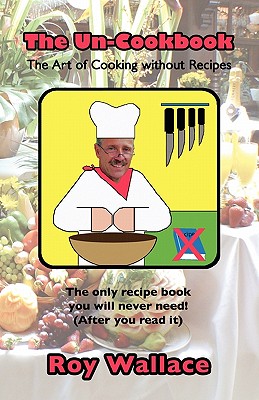 The Un-Cookbook
The Un-CookbookIf you would like to learn basic cooking skills that will allow you to make a meal from scratch using only existing ingredients and basic utensils, then you are in the right place!This book was engendered from the need for people to be able to learn the art of cooking without fancy recipes, exotic ingredients and expensive kitchen gadgetry.When you look at most traditional recipe books, you would be tempted to believe that only Cordon Bleu chefs and million dollar kitchens can produce acceptable results. The Un-Chef will show you otherwise.
Beyond Measure
With optimism and wisdom, Eliot invites us to join her on a freewheeling, spontaneous journey through her kitchen, where she shows us how to trust our own instincts as cooks. She guides us through a world of taste, mistakes, anecdotes, insights, and delicious ways of thinking about and preparing food, and teaches us to test truth against our own experiences.
Cook Without A Book:Meatless Meals
There are a lot of compelling reasons to eat less meat these days, but the shift to a totally or even
partly vegetarian lifestyle is easier said than done for many beef, poultry, and fish lovers. In Cook without a Book: Meatless Meals, best-selling author Pam Anderson encourages readers to eat meat-free a day or two a week and makes it easy to do so with recipes for simple, fun vegetarian and vegan meals that are made from accessible, wholesome ingredients. To help readers prep their kitchens for meatless cooking, she includes tips and techniques for stocking the pantry and refrigerator. Instead of presenting complicated, inflexible recipes, she lays out blueprints with ingredient options for everything from hearty breakfasts and fun salads and sandwiches to satisfying main courses—so readers can craft a rewarding dish exactly to their personal tastes.
How To Cook Without a Book
Pam Anderson grew up watching her parents and grandparents make dinner every night by simply taking the ingredients on hand and cooking them with the techniques they knew.
Times have changed. Today we have an overwhelming array of ingredients and a fraction of the cooking time, but Anderson believes the secret to getting dinner on the table lies in the past. After a long day, who has the energy to look up a recipe and search for the right ingredients before ever starting to cook? To make dinner night after night, Anderson believes the first two steps--looking for a recipe, then scrambling for the exact ingredients--must be eliminated. Understanding that most recipes are simply "variations on a theme," she innovatively teaches technique, ultimately eliminating the need for recipes.
Once the technique or formula is mastered, Anderson encourages inexperienced as well as veteran cooks to spread their culinary wings. For example, after learning to sear a steak, it's understood that the same method works for scallops, tuna, hamburger, swordfish, salmon, pork tenderloin, and more. You never need to look at a recipe again. Vary the look and flavor of these dishes with interchangeable pan sauces, salsas, relishes, and butters.
Best of all, these recipes rise above the mundane Monday-through-Friday fare. Imagine homemade ravioli and lasagna for weeknight supper, or from-scratch tomato sauce before the pasta water has even boiled. Last-minute guests? Dress up simple tomato sauce with capers and olives or shrimp and red pepper flakes. Drizzle sautéed chicken breasts with a balsamic vinegar pan sauce. Anderson teaches you how to do it--without a recipe. Don't buy exotic ingredients and follow tedious instructions for making hors d'oeuvres. Forage through the pantry and refrigerator for quick appetizers. The ingredients are all there; the method is in your head. Master four simple potato dishes--a bake, a cake, a mash, and a roast--compatible with many meals. Learn how to make the five-minute dinner salad, easily changing its look and flavor depending on the season and occasion. Tuck a few dessert techniques in your back pocket and effortlessly turn any meal into a special occasion.
There's real rhyme and reason to Pam's method at the beginning of every chapter: To dress greens, "Drizzle salad with oil, salt, and pepper, then toss until just slick. Sprinkle in some vinegar to give it a little kick." To make a frittata, "Cook eggs without stirring until set around the edges. Bake until puffy, then cut it into wedges." Each chapter also contains a helpful at-a-glance chart that highlights the key points of every technique, and a master recipe with enough variations to keep you going until you've learned how to cook without a book.
Times have changed. Today we have an overwhelming array of ingredients and a fraction of the cooking time, but Anderson believes the secret to getting dinner on the table lies in the past. After a long day, who has the energy to look up a recipe and search for the right ingredients before ever starting to cook? To make dinner night after night, Anderson believes the first two steps--looking for a recipe, then scrambling for the exact ingredients--must be eliminated. Understanding that most recipes are simply "variations on a theme," she innovatively teaches technique, ultimately eliminating the need for recipes.
Once the technique or formula is mastered, Anderson encourages inexperienced as well as veteran cooks to spread their culinary wings. For example, after learning to sear a steak, it's understood that the same method works for scallops, tuna, hamburger, swordfish, salmon, pork tenderloin, and more. You never need to look at a recipe again. Vary the look and flavor of these dishes with interchangeable pan sauces, salsas, relishes, and butters.
Best of all, these recipes rise above the mundane Monday-through-Friday fare. Imagine homemade ravioli and lasagna for weeknight supper, or from-scratch tomato sauce before the pasta water has even boiled. Last-minute guests? Dress up simple tomato sauce with capers and olives or shrimp and red pepper flakes. Drizzle sautéed chicken breasts with a balsamic vinegar pan sauce. Anderson teaches you how to do it--without a recipe. Don't buy exotic ingredients and follow tedious instructions for making hors d'oeuvres. Forage through the pantry and refrigerator for quick appetizers. The ingredients are all there; the method is in your head. Master four simple potato dishes--a bake, a cake, a mash, and a roast--compatible with many meals. Learn how to make the five-minute dinner salad, easily changing its look and flavor depending on the season and occasion. Tuck a few dessert techniques in your back pocket and effortlessly turn any meal into a special occasion.
There's real rhyme and reason to Pam's method at the beginning of every chapter: To dress greens, "Drizzle salad with oil, salt, and pepper, then toss until just slick. Sprinkle in some vinegar to give it a little kick." To make a frittata, "Cook eggs without stirring until set around the edges. Bake until puffy, then cut it into wedges." Each chapter also contains a helpful at-a-glance chart that highlights the key points of every technique, and a master recipe with enough variations to keep you going until you've learned how to cook without a book.
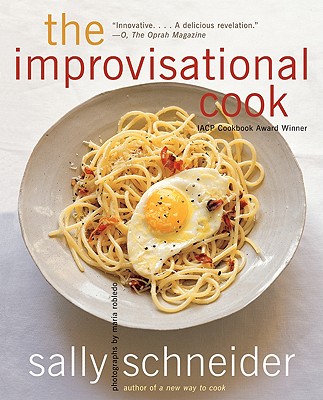
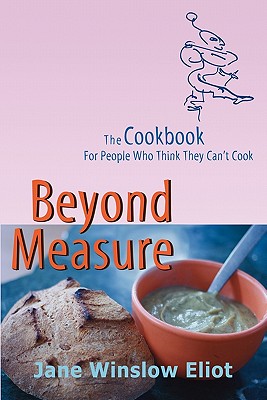
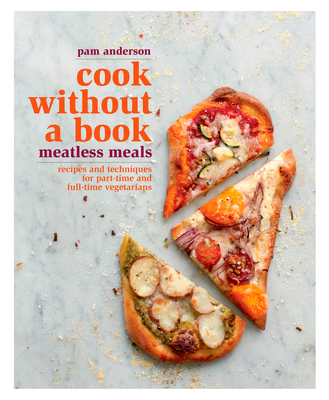
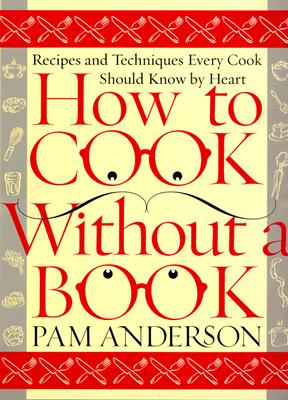
No comments:
Post a Comment